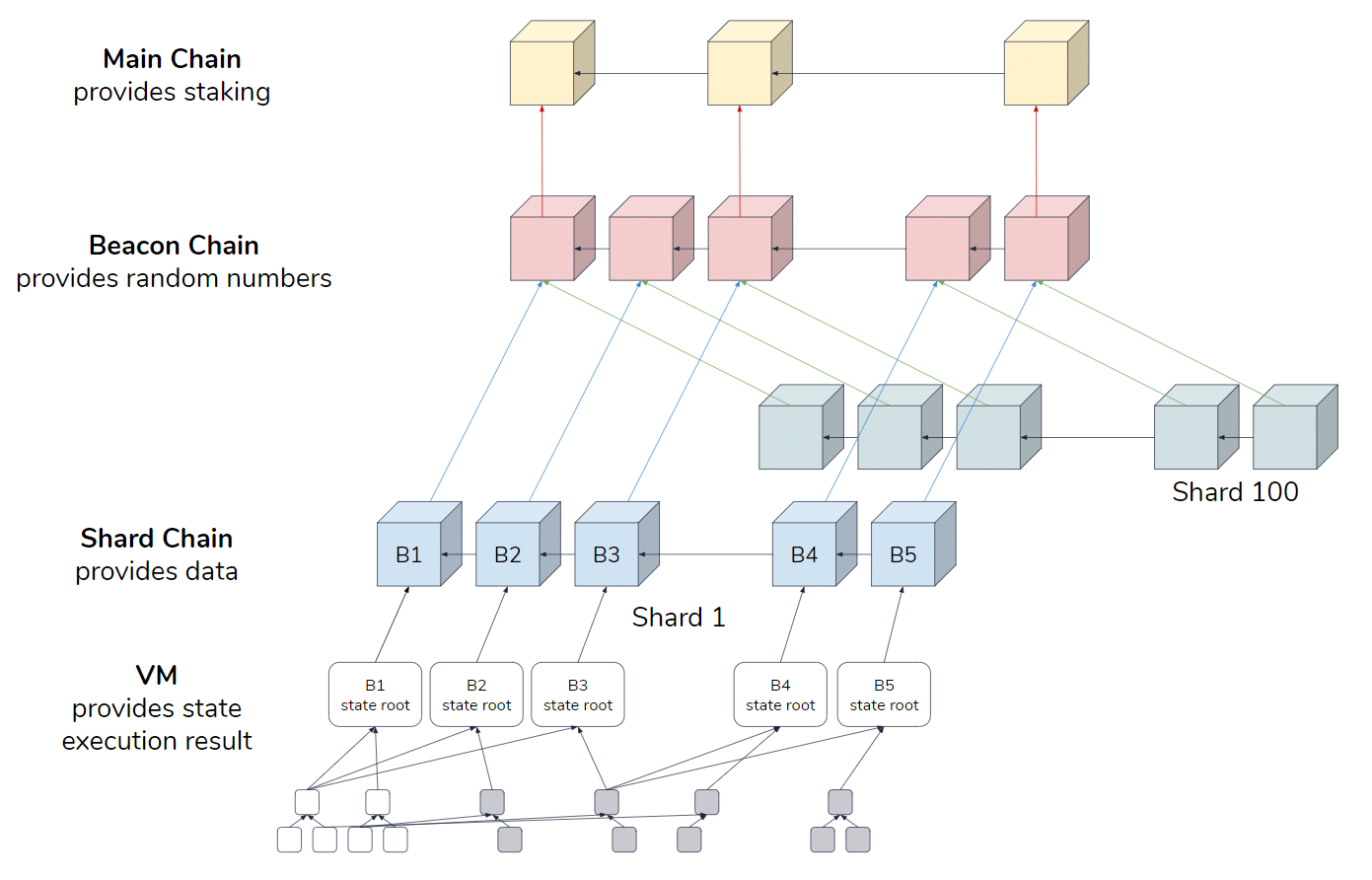Kraken has always demonstrated sympathy for Ethereum and, in its first-ever research project, the US exchange illustrates the past, present and future of the famous smart contract platform.
With this 14-page analysis, Kraken’s research team wants to inform investors about the basic aspects of the most important cryptocurrencies, in order to approach 2020 which, according to Kraken, started off on the right foot, especially in terms of appreciation of the major cryptocurrencies.
“Into the Ether” is a concise essay, which, without going too much into technical details, illustrates a complete overview of Ethereum, starting from the origins, moving on to an explanation of the protocol and a list of key events, and finally describing the scalability developments on layers 1 and 2.
The last section is of particular interest as it describes how Ethereum is dealing with the problem of scalability, illustrating the transition to Ethereum 2.0 in a detailed but simple way.
The 6 chapters of the Ethereum research
The first chapter starts with a brief history of electronic money, from David Chaum’s paper that gave birth to the cypherpunk movement, passing through the invention of the concept of smart contract by Nick Szabo, leading to the launch of Ethereum, including a list of the team of founders and illustrating their vision:
“Pursuing the vision of a “world computer,” the ethereum team modified the original bitcoin protocol and blockchain design to support smart contracts such as a Turing-complete programming language acting as a generalized, transaction-based state machine”.
Chapter II focuses on the fundamental aspects of the Ethereum protocol, explaining the difference between the UTXO model and the EVM “states” as well as the types of accounts that can be controlled externally or by contracts. Then follows a brief explanation of each key concept such as smart contract, the Solidity programming language, what is the Ethereum Virtual Machine, the concept of gas, nodes, miners and the Proof of Work.
The third chapter talks about the history of Ethereum’s important events, covering all the forks and updates performed by the protocol, from Frontier to the Constantinople hard fork, including the most significant moments.
It couldn’t fail to mention the period of the ICOs which gave birth to numerous projects, many of which, highlights the report, are still in development and remained on the Ethereum blockchain, the birth of the ERC20 standard and the launch of CryptoKitties, the famous dApp that Kraken had already somehow adopted last year.
The other important moments include the development and financing of projects dedicated to the scalability issue, the sharding concept of Vitalik, Casper FFG, the launch of Raiden Network on the mainnet and a general explanation of the last two forks, namely Constantinople and Istanbul.
The chapter on scalability, the fourth, is particularly interesting and explains in simple terms the Ethereum roadmap heading towards a platform that solves the famous blockchain trilemma, where security, decentralization and scalability reach a solution that goes beyond the trade-offs.
Beacon Chain, PoS and sharding are explained in simple words, and they follow the roadmap with regard to scalability on Layer 1 and 2, in addition to the Ethereum 2.0 phases.

Adoption, the big problem of all blockchains, is addressed in the second to last chapter. If the ICOs have been a great adoption engine for Ethereum, the report also mentions the current use cases
“Anecdotally, Ethereum continues to host many emerging projects across a host of applications, including stablecoins, games, prediction markets, and decentralized finance”.
Also interesting is the comparison with all the Ethereum “killers” and an overview of the use of dApps by the listed platforms, namely EOS, Tron, Cardano and others. The conclusions give a very positive overview on the future of Ethereum, highlighting how social assumptions are its strong point.
Whether you are a fan of Bitcoin or another Smart Contract platform, we recommend everyone to read the report to learn more about the potential and problems of the most famous blockchain after Bitcoin.




